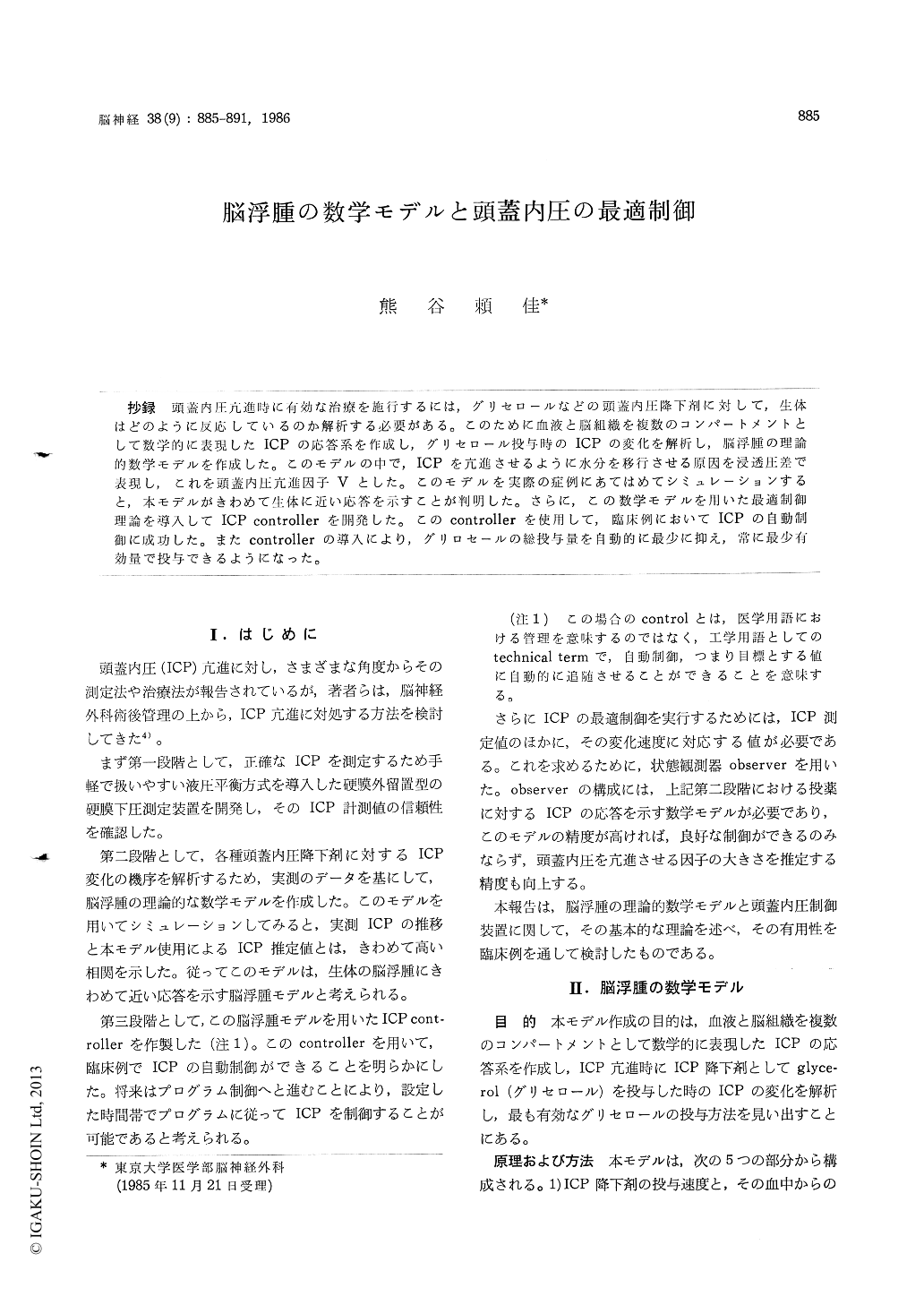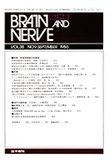Japanese
English
- 有料閲覧
- Abstract 文献概要
- 1ページ目 Look Inside
抄録 頭蓋内圧亢進時に有効な治療を施行するには,グリセロールなどの頭蓋内圧降下剤に対して,生体はどのように反応しているのか解析する必要がある。このために血液と脳組織を複数のコンパートメントとして数学的に表現したICPの応答系を作成し,グリセロール投与時のICPの変化を解析し,脳浮腫の理論的数学モデルを作成した。このモデルの中で,ICPを亢進させるように水分を移行させる原因を浸透圧差で表現し,これを頭蓋内圧亢進因子Vとした。このモデルを実際の症例にあてはめてシミュレーションすると,本モデルがきわめて生体に近い応答を示すことが判明した。さらに,この数学モデルを用いた最適制御理論を導入してICP controllerを開発した。このcontrollerを使用して,臨床例においてICPの自動制御に成功した。またcontrollerの導入により,グリロセールの総投与量を自動的に最少に抑え,常に最少有効量で投与できるようになった。
It is necessary to analyse various parameters responding to hypertonic solutions such as man-nitol or glycerol, in order to achieve the best therapeutic results for patients having increased intracranial pressure (ICP). The responding model system for the ICP composing of multi-compartments of blood and brain tissue was mathematically introduced. By analysing the changes of the ICP under administration of glycerol using this system, the mathematical model for brain edema was developed. The cause of water transfer in this model system was indicated as the difference of the osmotic pressure and determined as ICP increasing factor, V. It was demonstrated that this theoretical model responded quite similarly to human ICP monitored by sumulating this system for clinical cases. The ICP controller was further developed. The automatic control of ICP was clinically achieved by using this controller. The minimal effective dose of glycerol can be auto-matically administered by presetting a desirable ICP for each patient.

Copyright © 1986, Igaku-Shoin Ltd. All rights reserved.


